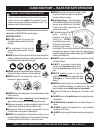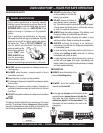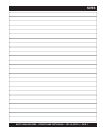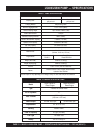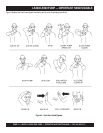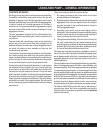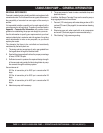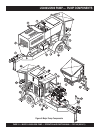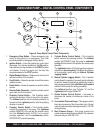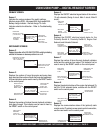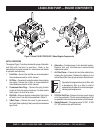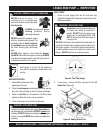
PAGE 16 — MAYCO LS400/LS500 PUMP — OPERATION AND PARTS MANUAL — REV. #6 (09/19/11)
LS400/LS500 PUMP — GENERAL INFORMATION
REGIONAL DIFFERENCES
Concrete is made by mixing locally available rock and sand with
cement and water. For this reason there are great differences in
the pumpability of concrete from one region of the country to
another.
It is impossible to define a specific mix for each region that the
concrete pump be will working in. Therefore, the mixes listed in
Appendix - Concrete Mix Information will provide a basic
guideline for establishing the proper mix design for your area.
Use this information to specify your requirements to your local
ready-mix batch plant, contractor and civil engineer. It may take
minor adjustments to make a mix pumpable, so you should
explain your needs.
The elements that have to be controlled and consistently
maintained by the batch plant are:
1. The sizing and mix percentage of rocks, gap graded from
the largest down through the smallest sizes.
2. Sand with a sieve analysis that has the proper percentage
of fines, ASTM C33 spec.
3. Sufficient cement to produce the required design strength
of the concrete and provide the lubricating binder to pump
the concrete through the delivery system.
Use a minimum of:
500 lbs. of cement/cu yd for 2500 p.s.i. concrete after 28
days.
530 lbs. of cement/cu yd for 3000 p.s.i. concrete after 28
days.
600 lbs. of cement/cu yd for 4000 p.s.i. concrete after 28
days.
4. Admixture pump-aid if necessary.
5. The proper amount of water to make a workable slump and
plasticize the mix.
In addition, this Mayco Concrete Pump can be used to pump a
large aggregate hard rock as follows:
1. Pea rock (1/2" minus) pump with mixes being as low as 30%
rock and 70% sand. (See page 44, for comments on cleaning
the pump.)
2. Shortening pea rock when used with an air compressor
and nozzle. (See back pages for recommended setup.)
3. “Mud Jacking”, high pressure grouting.



